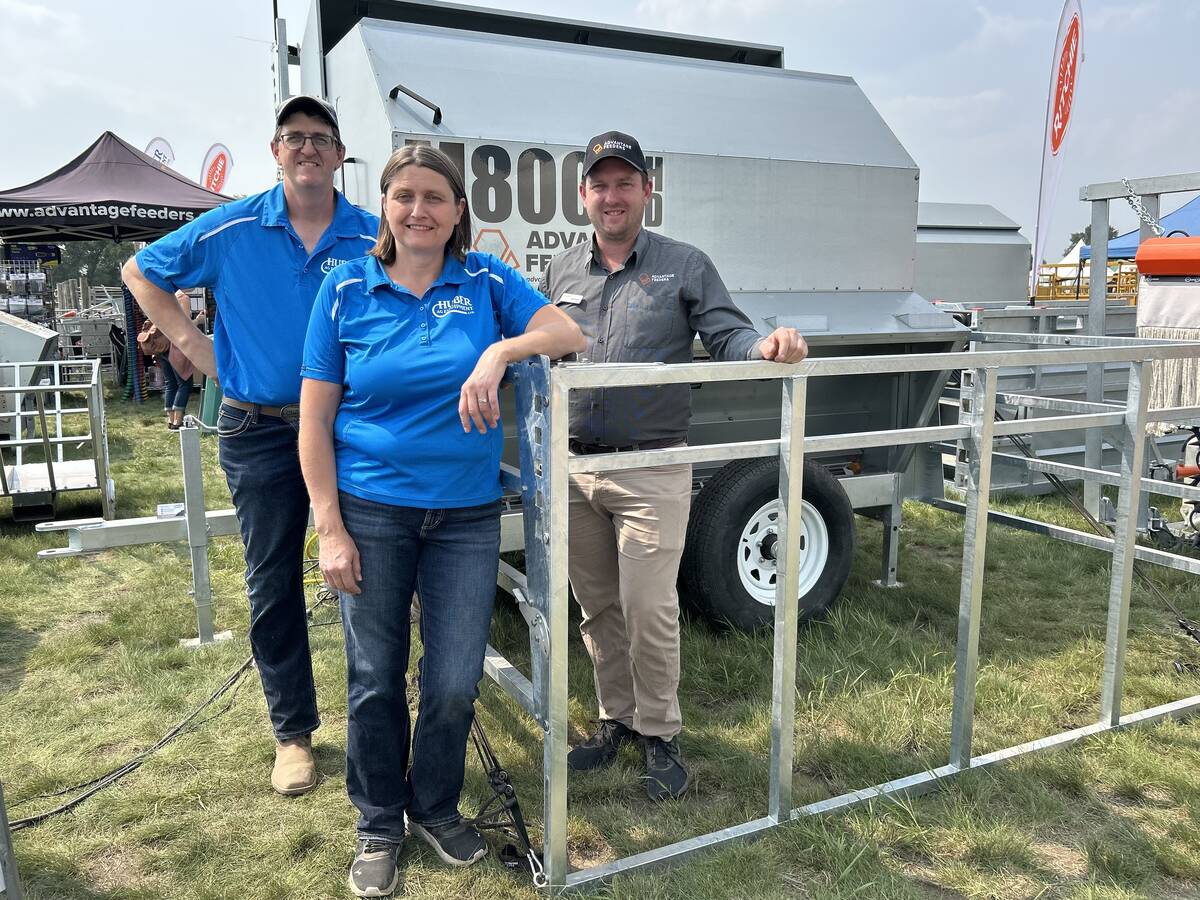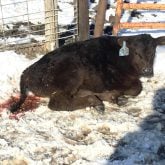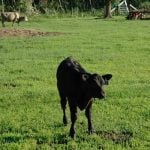Muddy corrals in early spring are unacceptable for calving. Mud can be a sign of neglect or the unfortunate result of late spring snow storms severe enough to backfill crowded corrals to the point calves are trampled and smothered, or forced to live in the squalor of mud, cold and discomfort.
Mud, if not managed appropriately, leaves new calves stranded in muddy paddocks, unable to lie down or move freely. Muddy conditions in calving corrals should be avoided if at all possible.
There are no good outcomes to poorly managed corrals, starting with the negative environmental effect of manure runoff into adjacent waterways along with nitrate contamination. Wet, sloppy conditions are the primary reason pathogens causing intestinal and respiratory diseases proliferate. Scours and respiratory conditions become a numbers game very quickly. Bacteria and viruses create huge challenges when infection exists everywhere. Things such as navel and joint ill follow.
Read Also

Finding greater value through controlled creep feeding of beef calves
Gerard Roney, founder of Advantage Feeders in Australia, spoke at Ag in Motion 2025 about using controlled creep feeding to develop a calf’s rumen, allowing for better uptake of energy and protein at a younger age, along with other beneficial applications of creep feeding.
Chris Clark, beef specialist with Iowa State University Extension and Outreach, outlines some of the issues with keeping calves in muddy corrals in an article in Beef magazine.
“Muddy conditions increase the risk for hypothermia, failure of passive transfer and infectious disease of newborn calves,” he says. “Wet, muddy coats do not insulate as effectively as clean, dry coats. Born into these conditions, newborns can struggle to regulate body temperature and become chilled, which can lead to weakness, lethargy and suckling issues. Pathogens thrive in muddy lot conditions and udders can easily become dirty with contaminated mud and manure.”
Although every operation is different, with its own challenges, Clark says producers should try to keep calving areas well drained. Think about increasing pen space or reducing stock density somehow, and look for ways to move cattle to cleaner, drier pens, even if you can only do so occasionally. If muddy calving conditions are unavoidable, check cows and calves often and carefully, to ensure calves get colostrum soon after birth.
“When we are talking about things like hypothermia and failure of passive transfer, the earlier we can intervene the better,” says Clark.
Producers might be tempted to move pairs from muddy pens to cleaner pasture once the calves seem to be doing well, but this can cause problems.
“One is that pastures may not yet be ready to graze and may be very wet themselves. This creates the risk of reducing pasture productivity by grazing too early and damaging wet ground,” Clark says.
We are also reminded by Dr. Bruce Anderson, extension forage specialist at the University of Nebraska-Lincoln, this doesn’t work well if you are still dropping calves into a muddy quagmire. Instead, it’s better if you can restrict animals to small areas but move them to a fresh small area almost daily. It’s a lot of work to move fence, provide water and feed, and move the animals but it might be worth it. Pastures torn up for just one day usually recover quickly. Frequent movement to fresh, clean areas greatly improves sanitation, reducing scours.
Another option is the Sandhills calving system, which calls for producers to move cows that are still pregnant to new calving areas regularly. This separates older calves from younger ones, keeping them from infecting newborns. Clark suggests producers use some sort of modified Sandhills system on their own operations.
“Moving pregnant cows to a cleaner, drier environment can work well to protect newborn calves. There should be less risk of chilled calves and dirty udders and stuff like that,” he says.
Clark also notes that as animals struggle to walk through mud, they burn more calories. Mud also decreases the hair coat’s insulating ability. A cow’s energy requirements can increase by 30 per cent in deep mud, he says. Producers can make things easier for animals by maintaining paths between loafing and feeding areas, and managing conditions around the feeding area, he adds.
In those circumstances, body condition scoring to ensure cattle are maintaining body weight becomes important. Veterinary practitioners can advise producers on body condition scoring. For more on body condition, have a look at the Vet Advice column in the February 2023 issue of this magazine.
Here in the Great Plains, we rarely want to discourage receipt of moisture but sometimes we might say enough is enough. Some years, everywhere you turn are muddy hay yards and calving pastures. It’s difficult to get to the feed and then get feed to the cattle. Calves and cows both suffer from mud on their bodies and feed offered to them.
Fighting mud in the spring consumes resources, patience and ingenuity for producer and veterinarian alike. Use them wisely.

















